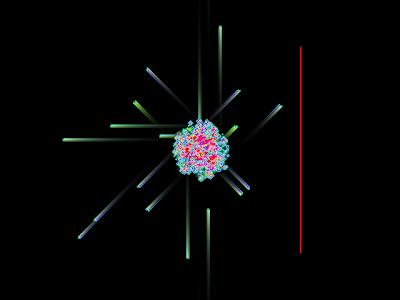In addition to the "Double Rotate" rule already discussed, there are two other similar variants. Like Double Rotate, they have the same pop-4 spaceships as Single Rotate, while avoiding indestructible structures.
1 clockwise; 3 half-turn
0,2,8,3,1,5,6,14,4,9,10,13,12,11,7,15
(The holes in a filled region move like billiard balls.)
Code: Select all
x = 12, y = 13, rule = M0,2,8,3,1,5,6,14,4,9,10,13,12,11,7,15:T256,256
$7ob4o$12o$12o$12o$12o$12o$12o$12o$12o$12o$12o$12o!
1 clockwise; 3 clockwise
0,2,8,3,1,5,6,11,4,9,10,14,12,7,13,15
(This has complement symmetry instead of Double Rotate's mirror-complement symmetry.)
Code: Select all
x = 12, y = 13, rule = M0,2,8,3,1,5,6,11,4,9,10,14,12,7,13,15:T256,256
$7ob4o$12o$12o$12o$12o$12o$12o$12o$12o$12o$12o$12o!
I'm puzzled why Tim Tyler's original Rotations series of rules didn't include any of these. Rotations IV is not far off: delete the one pop-2 rule and you get a mirrored version of 1cw1ht. But the pop-2 rule cuts the number of pop-4 spaceships from 6 (of SR and its variants) down to 1.
Edit:
1cw3ht has the funny property that you can bounce a hole around in a filled region for quite a while before it finally explodes.
Code: Select all
x = 12, y = 15, rule = M0,2,8,3,1,5,6,14,4,9,10,13,12,11,7,15:T256,256
$12o$12o$12o$12o$12o$12o$12o$12o$12o$12o$12o$12o$11o$12o!
